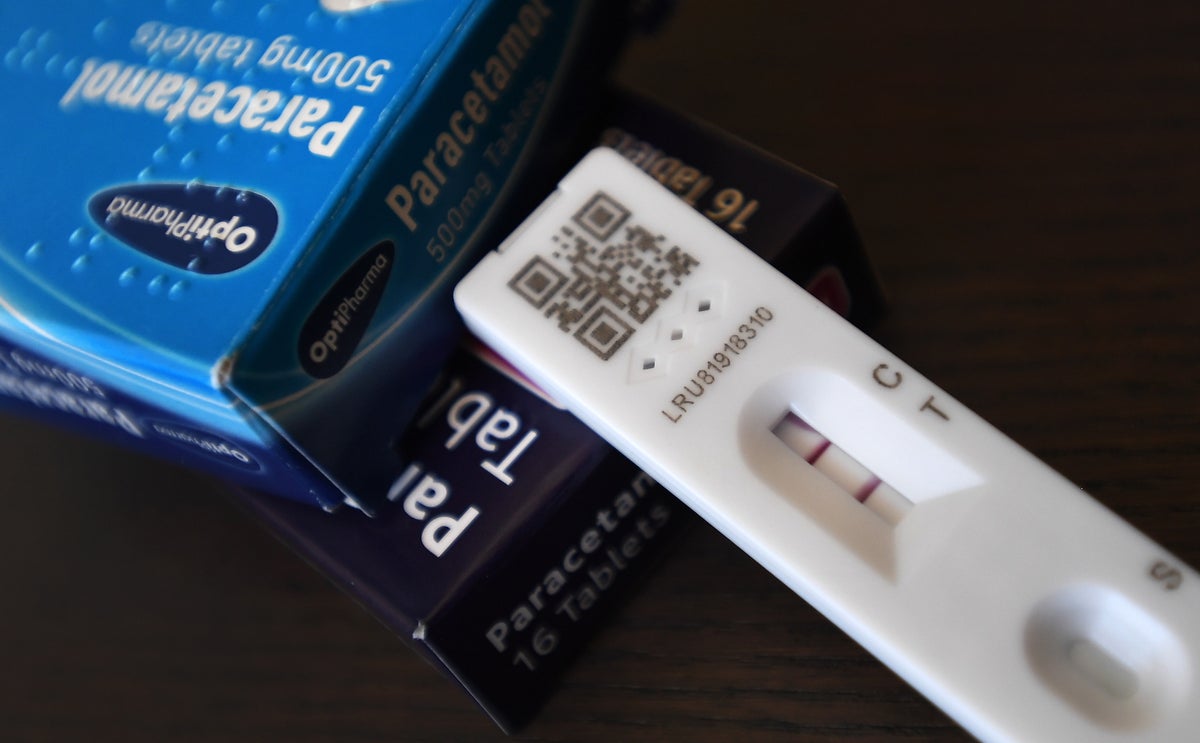UK coronavirus cases are on the rise again, with UK hospital infections rising by more than a third in a week.
According to the latest data from the Office for National Statistics (ONS), one in 65 people in England – the equivalent of 850,000 people – had Covid-19 in the week ending September 17.
That estimate was up from the previous week’s figure of one in 70 — about 766,500 people — based on extrapolated numbers from nose and throat samples from a small group across the country. This compares to a summer peak of 3.1 million resulting from the BA.4 and BA.5 Omicron subtypes.
While the trend in Scotland and Northern Ireland is unclear, there is also believed to be a rise in infections in Wales, where one in 50 people are thought to have the virus that week.
In England, the percentage of people testing positive for Covid-19 increased in the North West, Yorkshire and the Humber, the West Midlands, the East of England, London and the South East, while the trend was uncertain in all other English regions. , said the ONS.
Although this is considered less accurate as significantly fewer people are testing themselves for the virus and sharing their results with the government than at the peak of the epidemic, official testing data from the UK Health Safety Agency (UKHSA) suggests areas with higher infection rates. Geographically diverse.
According to UKHSA figures, Plymouth currently has the highest infection rate, with 143 people per 100,000 testing positive for the virus in the week to October 1.
This was followed by Gateshead, North Somerset, Isle of Wight, Northumberland, Dorset and York – with infection rates between 141 and 124 per 100,000 people.
Meanwhile, the number of people infected with the coronavirus in hospital in England reached 9,631 in the week to Wednesday, a 37% increase on the previous seven days and the highest number in two months. The actual figure may be higher as asymptomatic testing in NHS settings has stopped since August 31.
(Office for National Statistics/UKHSA)
In the South West, the rate of hospitalizations has increased by 250% since mid-September, rising to 16 per 100,000 in the latest week.
The region now has 1,003 positive cases, close to the peak seen this summer during waves of infections driven by Omicron subtypes BA.4 and BA.5, which pushed the national hospital count to 14,000 in mid-July.
The latest figures show that all areas of England are seeing a steady increase in the number of cases, with three areas returning to levels last seen in late July – although all are significantly lower than seen at the peak of the epidemic.
The latest increases are “worrying” and case and hospitalization rates are “at their highest level in months”, UKHSA’s chief medical adviser Susan Hopkins said.
“Outbreaks are increasing in hospitals and nursing homes,” said Dr. Hopkins. “Make sure you have the proper Covid-19 vaccinations and avoid contact with others if you are unwell or have symptoms of a respiratory infection.
“If you are sick, it is very important to avoid contact with the elderly or those who may be at risk of serious illness due to their existing health conditions.”
Here are the 20 areas in England with the highest infection rates, according to testing data released by the UKHSA in the week to October 1:
Local Government Organization | Number of cases | Infection rate (per 100,000 people)
- Plymouth – 376 – 143
- Gateshead – 286 – 141
- North Somerset – 282 – 130
- Isle of Wight – 182 – 127
- Northumberland – 413 – 127
- Dorset – 477 – 125
- York – 262 – 124
- East Riding of Yorkshire – 426 – 124
- Hampshire – 1,701 – 122
- Devon – 989 – 122
- Nottinghamshire – 1,009 – 121
- Stoke-on-Trent – 308 – 120
- Torbay – 162 – 118
- Doncaster – 372 – 118
- East Sussex – 660 – 118
- East Cheshire – 453 – 117
- derbyshire – 943 – 116
- Southampton – 292 – 115
- Lincolnshire – 881 – 115
- Staffordshire – 1,009 – 114

“Total creator. Devoted tv fanatic. Communicator. Evil pop culture buff. Social media advocate.”

